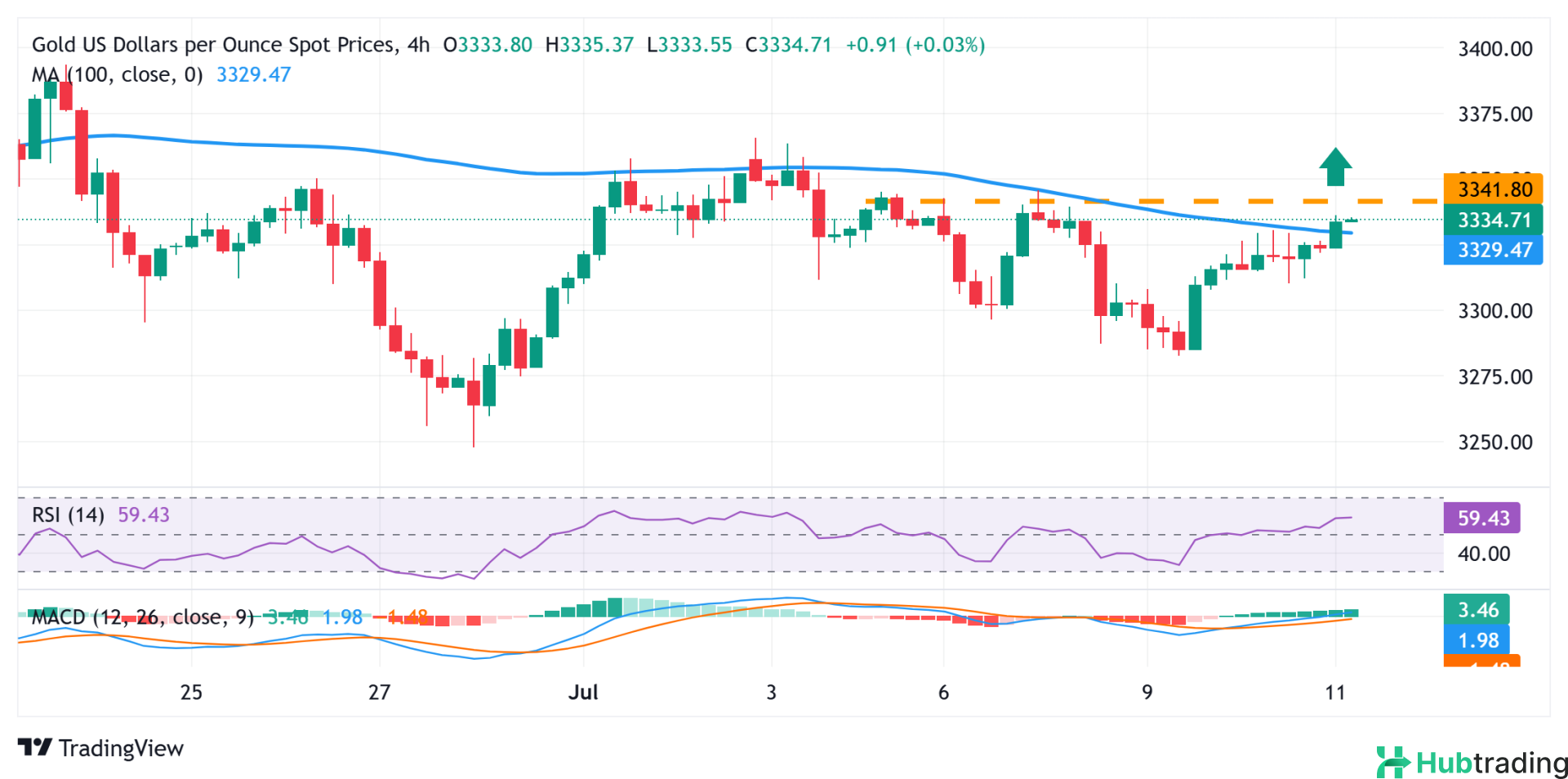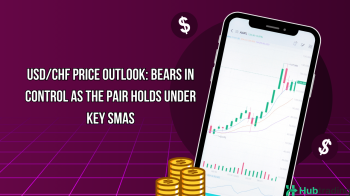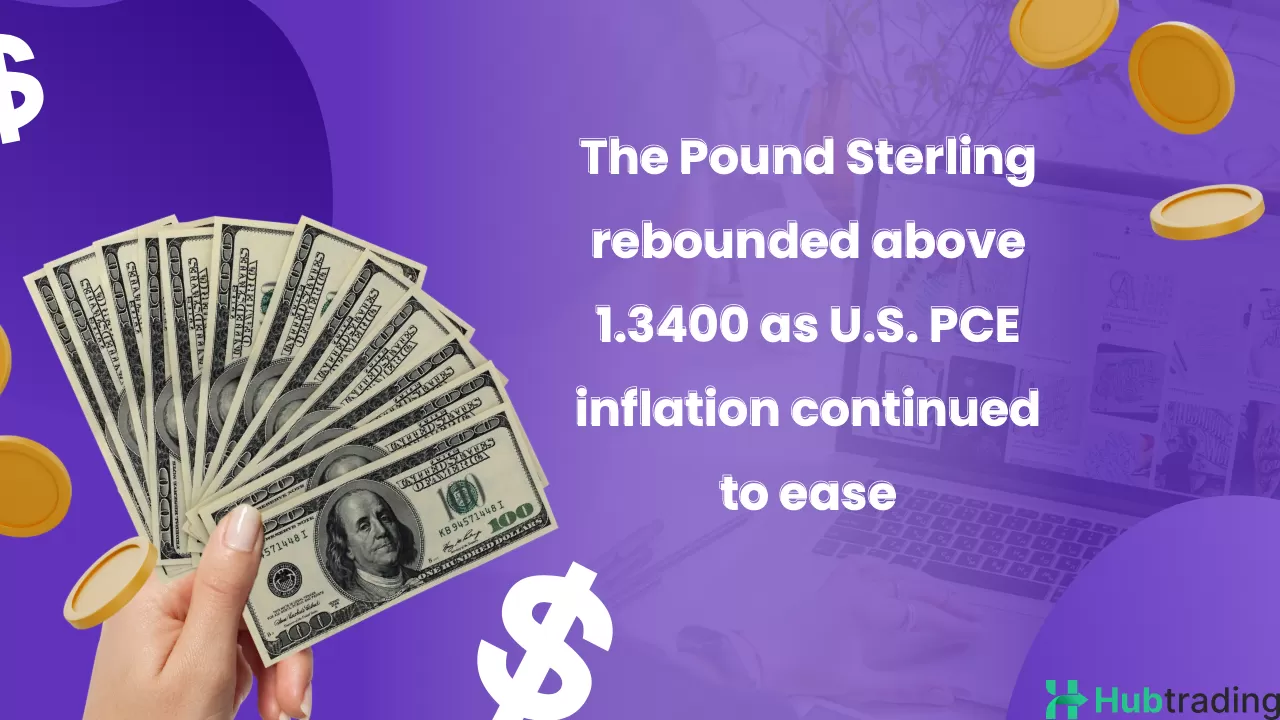-
Gold prices climb for the third consecutive session, though further gains appear capped.
-
Escalating trade tensions continue to support the metal, offsetting the impact of a stronger U.S. dollar.
-
Waning expectations of Fed rate cuts may deter XAU/USD bulls from initiating new long positions.
Gold (XAU/USD) is extending its upward trajectory for the third consecutive day on Friday, approaching the upper boundary of its weekly trading range. This renewed strength is largely driven by escalating trade tensions, particularly following U.S. President Donald Trump's decision to issue a series of new tariff notices targeting multiple trading partners this week. Heightened concerns over the potential economic fallout from these actions have fueled safe-haven demand for the precious metal.
Despite this bullish momentum, the upside for gold remains capped as expectations for an immediate interest rate cut by the Federal Reserve (Fed) continue to diminish. These waning hopes are supporting the U.S. dollar (USD), which is currently hovering near a two-week high. The stronger dollar is limiting aggressive bullish positioning on gold, a non-yielding asset, and investors are likely to remain cautious ahead of any significant macroeconomic developments.
Market Movers: Gold Holds Firm on Safe-Haven Flows
-
President Trump announced a 35% tariff on Canadian imports, effective August 1. This follows more than 20 similar tariff notifications issued just this week, including a 50% tariff on U.S. copper imports announced Wednesday. These measures are further amplifying demand for safe-haven assets like gold.
-
Minutes from the Fed's June 17–18 policy meeting reveal most policymakers are concerned about rising inflation fueled by aggressive trade policies. While only a few officials supported a rate cut in the near term, the broader tone helped solidify the USD near Thursday’s two-week peak.
-
Labor market data remains robust, adding to the Fed’s cautious stance. The U.S. Department of Labor reported that initial jobless claims fell to 227,000 for the week ending July 5—lower than both expectations and the prior month’s revised figure of 232,000. Coupled with strong employment figures from last week, this points to a resilient labor market, reducing urgency for monetary easing.
-
San Francisco Fed President Mary Daly commented that while monetary policy remains restrictive, it may soon be appropriate to begin rate adjustments. Daly noted that current tariff levels aren’t as severe as initially expected, and economic fundamentals remain solid.
-
Fed Governor Christopher Waller stated that inflationary effects from tariffs are likely to be temporary and emphasized that any rate cut would not be politically motivated. Waller, a potential contender to succeed Fed Chair Jerome Powell in 2026, reiterated support for an early rate cut.
-
In contrast, St. Louis Fed President Alberto Musalem stressed the importance of monitoring whether tariffs create one-time or persistent inflation. He maintained that the U.S. economy is in a strong position and that maintaining stable long-term inflation expectations is critical.
- With no major U.S. economic data scheduled for release on Friday, market participants are turning their attention to further FOMC commentary and ongoing trade developments. At present, gold remains on track to finish the week with only modest gains.
Technical Outlook: Key Levels to Watch for XAU/USD

From a technical standpoint, sustained buying above the $3,340–3,342 horizontal resistance would confirm a breakout beyond the 100-period Simple Moving Average (SMA) on the 4-hour chart. This move, supported by mildly bullish technical indicators, could pave the way for further upside toward the next resistance around $3,360–3,362. A successful push beyond that level might enable XAU/USD to retest the psychologically significant $3,400 mark.
On the downside, immediate support lies at $3,326. A break below this level may attract fresh buying interest near the $3,300 round figure. If that level fails to hold, further weakness could expose the $3,283–3,282 zone, marking a one-week low seen on Tuesday. A decisive drop below this area would likely trigger accelerated losses, targeting the July swing low near $3,248–3,247.





